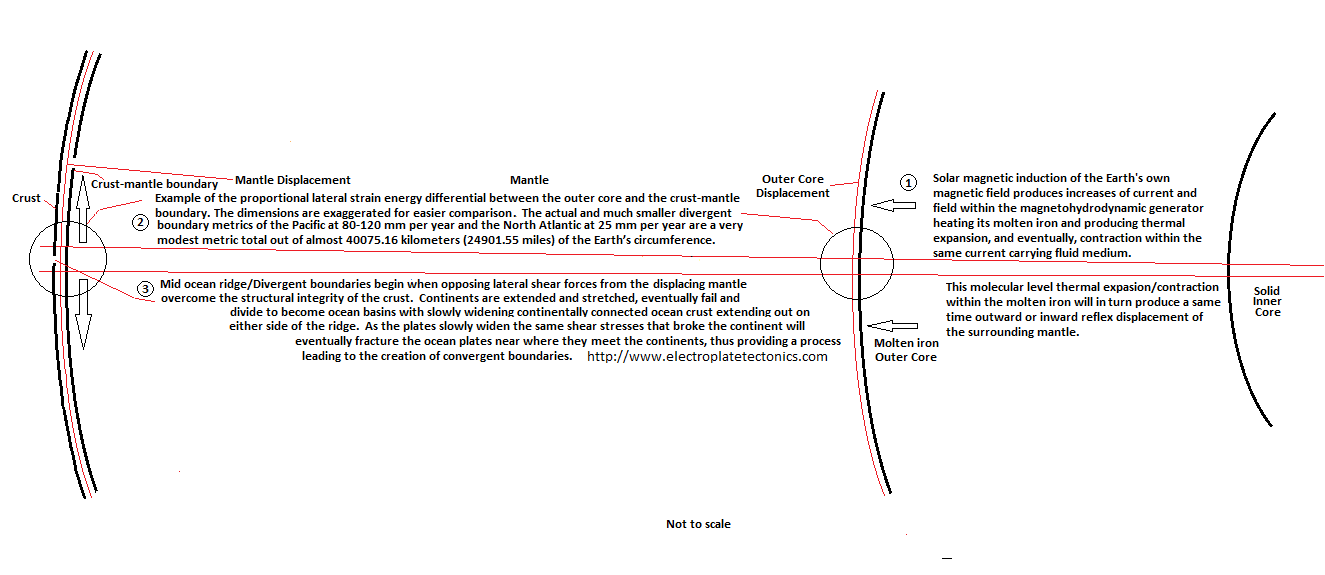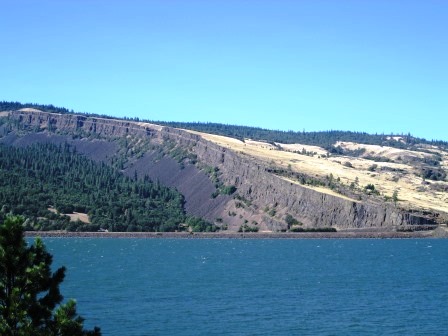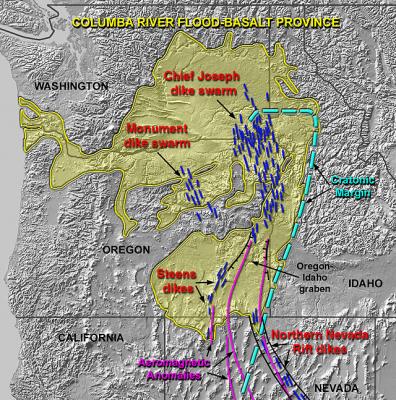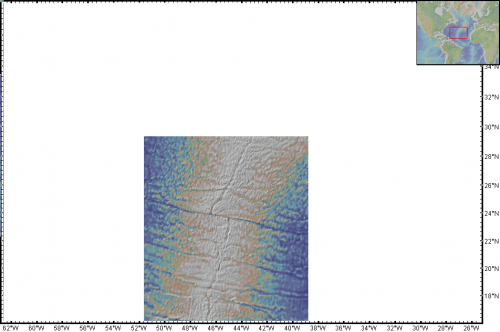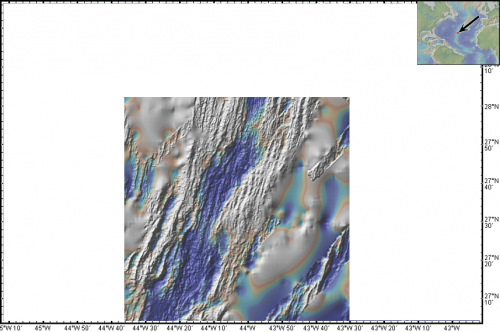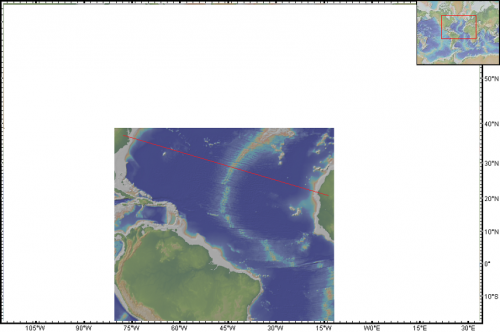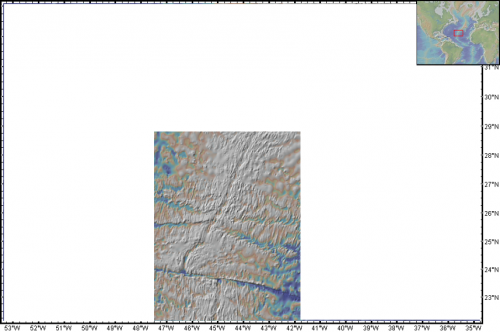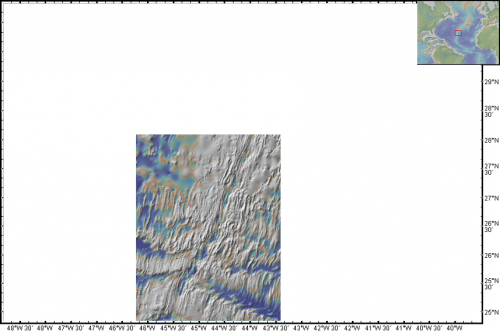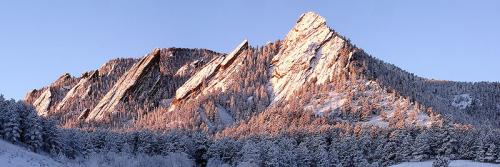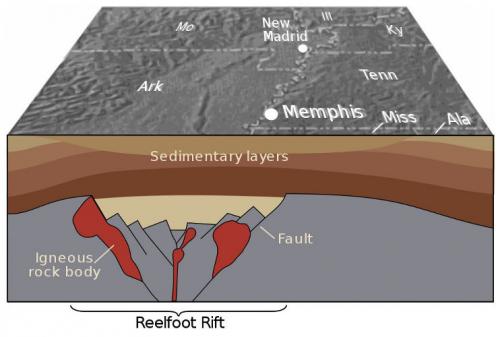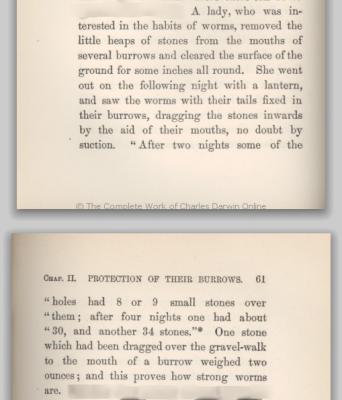-
Posts
978 -
Joined
-
Last visited
Content Type
Profiles
Forums
Events
Everything posted by arc
-
Yes, point taken. That is why I referred to them as ranges. http://en.wikipedia.org/wiki/Volcanic_belt "Volcanic belts are similar to a mountain range, but the mountains within the mountain range are volcanoes, not actual mountains that are formed by faulting and folding by the collision of tectonic plates." I live at the edge, if not really within the cascade range that runs down the west coast of the U.S. It runs from N. California to British Columbia and is a very volcanically active range as it is part of the Pacific ring of fire. The crust was first broken in a extension event, and then pushed together during an episode of compression, bulldozing these now broken sections together, one onto the next, forming a range of overlapping slabs of crust. A person can drive up the Columbia River gorge that cuts directly through this range and view these tilted slabs. It's hard to see but there is a semi-truck on the highway just above the river to the left, just below and right of that clearing in the trees, just for a sense of scale of this slab. http://en.wikipedia.org/wiki/Cascade_Range "When the Cascades started to rise 7 million years ago in the Pliocene, the Columbia River drained the relatively low Columbia Plateau. As the range grew, erosion from the Columbia River was able to keep pace, creating the gorge and major pass seen today. The gorge also exposes uplifted and warped layers of basalt from the plateau." There's that Plio-Pleistocene mountain building period again! That thing really gets around! So, our volcano's here along this range are undoubtedly indebted to a period of extension and then compression to fracture this basaltic crust and create the many easy avenues for the volcanic processes to rise through. And below we see that the extension occurred in the presiding Miocene when the Basin and Range Province just to the south and east of the Cascades was actively extending. http://en.wikipedia.org/wiki/Columbia_River_Basalt_Group "During the middle to late Miocene epoch, the Columbia River flood basalts engulfed about 163,700 km2 (63,200 sq mi) of the Pacific Northwest, forming a large igneous province with an estimated volume of 174,300 km3 (41,800 cu mi). Eruptions were most vigorous from 17–14 million years ago, when over 99 percent of the basalt was released. Less extensive eruptions continued from 14–6 million years ago." Image above provided by Victor Camp and Martin Ross. "Occam also needs to consider the age sequence and composition of the rocks on the bed of the Atlantic which definitely suggest and fit with epidsodic upwelling of mantle material as opposed to compression of continental crust." Well, that massive extensional event in the Miocene that created the Basin and Range Province is caused by the mantle's outward displacement. It would involve every divergent boundary on the planet. The flow in the Atlantic boundary could possibly be greater but considering that boundary had no convergent trenches within the surrounding basin would guarantee a crushing of the boundary anyway when the mantle subsided. What would produce this one time "episodic upwelling" event along the entire 16,000 km boundary that you elude to? That is the real killer in all this, it occurred the whole length of the boundary. It would need to be accounted for everywhere no doubt. My model could accommodate a increase of magmatic boundary infill during that prior period of the Miocene, having the mantle already in overdrive is what put that extra boundary material in place for the mountain building to come. I really don't see a problem with it other than getting the exact timing right. And why other boundaries like the Pacific would not have out paced its volume and have even larger ridges themselves. Never mind. If you want to challenge my model on this you would need to show how this proto basin occurred between two 2 km high ridges simultaneously over the entire length of the Mid Atlantic Ridge, 16,000 km long through multiple fracture zones in two hemispheres, adjacent to four separate continental plates, while at the same geologic moment the Himalayas and the Andes and many smaller mountain ranges around the globe were also being created. The uniformity of this requires a simultaneous global scale mechanism . . . . . Just thought I'd mention that. Yes as I described above. I think they are creatures of opportunity looking for a weakness in the crust to take advantage of. Extended and then compressed ranges give opportunity to magma from below. Around 9 km between the base of the two ridges, if I understand you correctly. I took quite a few cross sections to get a good summit to summit measurement, on some it was hard to tell one side or the other for the real summit. They weren't distinct enough to identify, lower with two possible choices for ridges. So the two you see posted have nearly the same summits and basin distances. You would be surprised how the cross sections don't resemble the place you took them from. I would recommend everyone try Geomapp themselves, its a lot of fun.
-
I've known that for several years and the entire 20 pages of this thread. That there is maybe your problem, you haven't figured out the correct shapes of the problems you're dealing with. The total lack of simple cause and effect, the current models inability to make predictions of observations. My model again has delivered a accurate, and more importantly, simple explanation to a geologic phenomenon. Occam's Razor wins again. WOW! That looks to me as a "Hail Mary pass" to win your loosing argument. Great, more "Guess whats in the box geophysics" again. It's a basin developing between two halves of a once combined pressure ridge. It will grow wider and resemble the basin that was there before the Plio-Pleistocene mountain building period. All mountain ranges have the same simple cause, crustal compression, It is obvious yet some of the most committed to the standard model will argue the most tenuous explanations to avoid what they can see with their own two eyes. My model shows that simple surface observations using reliable data collected from multiple sets of the Himalayan and Andean ranges and the simple application of Occam's Razor lead to fruitful results.
-
That original Atlantic cross section is rather distorted. It was taken approximately where the red line below is located. Images below were furnished through and in no way endorsed by http://www.geomapapp.org using GlobalMulti-Resolution Topography (GMRT) Synthesis, Ryan, W. B. F., S.M. Carbotte, J. Coplan, S. O'Hara, A. Melkonian, R. Arko, R.A. Weissel, V. Ferrini, A. Goodwillie, F. Nitsche, J. Bonczkowski, and R. Zemsky (2009), Global Multi-Resolution Topography (GMRT) synthesis data set, Geochem. Geophys. Geosyst., 10, Q03014, doi:10.1029/2008GC002332. Data doi: 10.1594/IEDA.0001000, through http://creativecommons.org/licenses/by-nc-sa/3.0/us/ As you can see the cross section data was greatly compacted laterally. I used the highest definition possible for these images and then had to crop them so they would download to this site. As you can also see the rift or divergent center has a basin developing between the two opposing ridges. This proto-basin with the divergent boundary at its center maintains this configuration consistently along the entire Mid-Atlantic Ridge mountain range. These are a series of images of the same location at gradually increasing definition. Below are some additional cross sections along the ridge shown above. And take into consideration that their data has also been laterally compacted and the actual basin that is developing between the ridges is much wider than shown. For example in the image below the ridge on the right is over 2 km high while the basin between the ridge is around 9 km wide. The basin therefor would need to be shown as being more than 4 times wider to be in proper scale to the ridge elevation. We can clearly see now that there is two halves to a once single Atlantic ridge. The distance between the ridges averages around 50km +/- 10km or so. Taking the given rate of ridge movement from; http://pubs.usgs.gov/gip/dynamic/understanding.html "The rate of spreading along the Mid-Atlantic Ridge averages about 2.5 centimeters per year (cm/yr), or 25 km in a million years." It would then seem correct that if the geologic clock were to be ran backwards, and the last 2 million years of divergent boundary infill was removed, we would be observing a combination of the two ridges into one structure substantially higher than the current and very low basin that now occupies the area where the actual boundary is currently separating. ANNALS OF GEOPHYSICS, SUPPLEMENT TO VOL. 49, N. 1, 2006 Mountain uplift and the Neotectonic Period CLIFF D. OLLIER School of Earth and Geographical Sciences, University of Western Australia, Perth, Australia According to Wu et al. (2001) from the Pliocene to the Early Quaternary (5-1.1 Million years) the Kunlun Pass area of the Tibetan Plateau was no more than 1500 m high and was warm and humid. They write: «The extreme geomorphic changes in the Kunlun Pass area reflect an abrupt uplift of the Tibet Plateau during the Early and Middle Pleistocene. The Kunlun-Yellow River tectonic movement occurred 1.1-0.6 Million years.» Zheng et al. (2000) concluded from sediments at the foot of the Kunlun Mountains that uplift began around 4.5 Million years.) So this would put that massive pressure ridge that we call the Atlantic Mid-Ocean Ridge in the right timeline. Since that global period of mountain building ended there has been many much smaller and more typical periods of crustal compression that merely favors subduction. The mountain building periods require prior extended periods of almost continual outward mantle displacement to put in place an unusually large inventory of divergent boundary material. This material is what provided the higher level of gravitational potential energy derived compression when the mantle eventually subsided. The period in question would be when the Basin and Range Province was created along with many other documented cases of crustal extension that took place in the Miocene. http://en.wikipedia.org/wiki/Basin_and_Range_Province "Opinions vary regarding the total extension of the region, however the median estimate is about 100% total lateral extension. Total lateral displacement in the Basin and Range varies from 60 – 300 km since the onset of extension in the Early Miocene with the southern portion of the province representing a greater degree of displacement than the north." The Miocene Epoch was 23.03 to 5.3 million years ago. The earth went from the Oligocene Epoch through the Miocene and into the Pliocene. The Pliocene was followed by the Pleistocene, 2.6 million to 11,700 years ago. The Plio-Pleistocene mountain building period would correctly fall into place when the two now separated halves of the Atlantic ridge were formed by compression as a single, if only temporary, mountain ridge.
-
I'm sorry I'm such a pain in the ass. Is this what you are after? OK, well that doesn't surprise me you would say that.
-
Bold mine. You are confused again. Those are all boundaries that can easily move when the plate matrix becomes periodically loaded with the higher energy levels like those that were ascribed by Dr. Ollier for the Himalayas, energy levels not considered in the current standard model, energy levels that would easily overwhelm boundaries that will move when an increase of force is applied to them. Boundaries like the ones you mention above. No, the boundaries I’m referring to are boundaries that due to their characteristics cannot move laterally or subduct beyond their current rates if an increase of energy were to be applied to them. These are boundaries like the Himalayas and any other divergent boundaries that have no convergent boundary subduction trenches like those of the Pacific, as is currently the situation with the Atlantic. So if energies like those imposed on the Himalayas were to be imposed on them they would vertically rupture. I’ve posted this many times and it explains as to why there is evidence of past episodes of compression in the entire plate matrix including that cross section of the Atlantic Mid-Ocean Ridge. ANNALS OF GEOPHYSICS, SUPPLEMENT TO VOL. 49, N. 1, 2006 Mountain uplift and the Neotectonic Period CLIFF D. OLLIER School of Earth and Geographical Sciences, University of Western Australia, Perth, Australia 9.2. EXAMPLES 9.2.1. Tibet, Himalayas, Kunlun Mountains (As an example, consider the timing of uplift in Tibet and its bordering mountains. Gansser (1991) wrote: «... we must realize that the morphogenic phase is not only restricted to the Himalayas but involves the whole Tibetan block. This surprising fact shows that an area of 2500000 km2 has been uplifted 3000-4000 m during Pleistocene time and that this uplift is still going on.» In places the uplift rate is 4.5 mm/yr (five times the maximum in the European Alps). According to Wu et al. (2001) from the Pliocene to the Early Quaternary (5-1.1 Million years) the Kunlun Pass area of the Tibetan Plateau was no more than 1500 m high and was warm and humid. They write: «The extreme geomorphic changes in the Kunlun Pass area reflect an abrupt uplift of the Tibet Plateau during the Early and Middle Pleistocene. The Kunlun-Yellow River tectonic movement occurred 1.1-0.6 Million years.» Zheng et al. (2000) concluded from sediments at the foot of the Kunlun Mountains that uplift began around 4.5 Million years.) 9.4. CONCLUSIONS (Mountains are created by the vertical uplift of former plains, independent of any folding of the rocks underneath. The age of mountains should therefore refer to the age of vertical uplift after planation, not to the last period of folding (if the underlying bedrock happens to be folded). Most uplift occurred in the Plio-Pleistocene, or the very Late Miocene. The Neotectonic Period is demonstrated by the large amount of work listed in table 9.I. Plate tectonics, the ruling theory of the past forty years, has no adequate explanation for the widespread planation in mountain regions, or the remarkably young uplift. . . . . . . .– Either disprove the Neotectonic Period hypothesis, or show how their proposed mechanisms fit into the time scale of just a few million years). . . . .(Uplift occurred over a relatively short and distinct time. Some unknown process created mountains after a period with little or no significant uplift. This is a deviation from uniformitarianism. The mountain building period is relatively short, and not on the same time scale as granite intrusion (which takes tens of millions of years), or plate tectonics which is supposedly continuous over hundreds of millions of years. The same rapid uplift occurs in areas where hypotheses such as mantle plumes are not appropriate. We do not yet know what causes this short, sharp period of uplift, but we can exclude naive mountain-building hypotheses that are on the wrong time scale.) On this basis, a table of time of uplift of mountains and plateaus from around the world (table 9.I) shows a preponderance of uplift in the last few million years. This uplift of mountains appears to be a global phenomenon. It affects so-called Alpine mountains, mountains on passive continental margins, and those in deep continental interiors. The period of uplift is known as the Neotectonic Period (Morner, 1993; Ollier and Pain, 2000, 2001). OK, let’s tighten this up with some more substantiation; http://ceas.iisc.ern...h_geology06.pdf Gravitational potential energy of the Tibetan Plateau and the forces driving the Indian plate Attreyee Ghosh, William E. Holt Department of Geosciences, State University of New York, Stony Brook, New York 11790, USA Lucy M. Flesch*, Department of Terrestrial Magnetism, Carnegie Institution of Washington, Washington, DC 20015, USA A. John Haines†, Bullard Laboratories, University of Cambridge, Cambridge CB3 0EZ, UK ABSTRACT "We present a study of the vertically integrated deviatoric stress field for the Indian plate and the Tibetan Plateau associated with gravitational potential energy (GPE) differences. Although the driving forces for the Indian plate have been attributed solely to the mid-oceanic ridges that surround the entire southern boundary of the plate, previous estimates of vertically integrated stress magnitudes of 6–7 1012 N/m in Tibet far exceed those of 3 1012 N/m associated with GPE at mid-oceanic ridges, calling for an additional force to satisfy the stress magnitudes in Tibet. We use the Crust 2.0 data set to infer gravitational potential energy differences in the lithosphere. We then apply the thin sheet approach in order to obtain a global solution of vertically integrated deviatoric stresses associated only with GPE differences. Our results show large N-S extensional deviatoric stresses in Tibet that the ridge-push force fails to cancel." . . . ."there is no complete dynamic explanation for this large GPE of the Tibetan Plateau and the relatively fast movement of the Indian plate. There is no apparent down going slab attached to the Indian plate that might assist in driving the plate into Eurasia through the slab pull mechanism" . . . . . . . . . "However, the ridge push, or vertically integrated deviatoric stress magnitude, which is 3 1012 N/m (Richardson, 1992; Harper, 1975; Lister; 1975; Parsons and Richter, 1980), is not sufficient to satisfy inferred stress magnitudes of 6–7 1012 N/m that result from GPE differences between the Tibetan Plateau and the surrounding lowlands (Molnar and Lyon-Caen, 1988). An additional force is required to explain the disparity between the excess GPE of Tibet relative to that of the mid-oceanic ridges" . . . . . . . ."Lithospheric density variations associated with the support of the high topography of the Tibetan Plateau give rise to lithospheric body forces and hence stresses. Although the sources of stress that drive plate motions have been ascribed to many parameters (Forsyth and Uyeda, 1975), from the point of view of stress continuity and force balance, the stresses that drive lithospheric motion arise from two sources: (1) gravity acting on density variations within the lithospheric shell on Earth, and (2) gravity acting on density variations deeper than the lithospheric shell. The latter gives rise to tractions (radial and tangential) that act on the base of the lithosphere, affecting the stress field of the lithosphere and producing dynamic topography. The former involves density variations associated with support of nondynamic components of topography". Conclusions; . . "It is clear that something is missing as a driving force that does not have its source within the lithospheric shell." Well, that is impressive. Now if I were to produce evidence from other geographic areas that a similarly large scale deployment of compressive energy not only occurred in a narrow period of time, say 10 MY, but at a the same time starting 10MYA, it would mark this phenomena as a global scale event rather than one that a proponent of convection would ascribe to be a local mantle upwelling . . . . http://www.scienceforums.net/topic/73730-plate-tectonic-mechanism/page-18#entry845119 studio Posted 3 January 2015 - 03:37 PM “I do not know if the Earth pulsates over a long time period or not, so I am genuinely trying to help you make your model work.” http://www.rochester.edu/newscenter/taking-the-pulse-of-mountain-formation-in-the-andes/ “This study provides increasing evidence that the plateau formed through periodic rapid pulses, not through a continuous, gradual uplift of the surface, as was traditionally thought,” said Garzione. “In geologic terms, rapid means rising one kilometer or more over several millions of years, which is very impressive.” “What we are learning is that the Altiplano plateau formed by pulses of rapid surface uplift over several million years, separated by long periods (several tens of million years) of stable elevations,” said Garzione. http://www.rochester.edu/news/show.php?id=3167 “Tectonic Theory May Need Revision in Light of New Study in Science” “Mountains may experience a "growth spurt" that can double their heights in as little as two to four million years—several times faster than the prevailing tectonic theory suggests.” “By studying sedimentary basins in the high Andes Mountains, the team could determine when and at what altitude these ancient sediments were deposited. That record of altitude changes shows that the Andes Mountains rose slowly for tens of millions of years, but then suddenly lifted much faster between 10 and 6 million years ago.” http://news.ufl.edu/archive/2008/06/andes-mountains-grew-in-rapid-spurts-not-slowly-uf-researcher-says.html To reconstruct the Altiplano’s sequential rise, the researchers coaxed geochemical clues in the form of oxygen isotopes from ancient soil nodules made of calcium carbonate. The nodules were sampled from layered soil deposits between 5 million and 28 million years old. Stunning isn't it. The two youngest and largest ranges by way of their own metrics occurred simultaneously. Here we have not one but two examples of massive energy dispositions in a geologic blink of an eye in opposite hemispheres at the same time. And the standard model would prescribe two different causes no doubt despite the rather devastating evidence regarding the conclusion earlier; http://pubs.usgs.gov/gip/dynamic/himalaya.html "It is clear that something is missing as a driving force that does not have its source within the lithospheric shell." This model has from its beginning clearly predicted the observations stated above; http://www.scienceforums.net/topic/73730-plate-tectonic-mechanism/#entry735438 This was post #4 of this thread. The outer core thermal cycle is variable throughout its cycle, even from one maximum to the next in both timing and duration. Now let’s say we have an extra-long thermal expansion cycle and the divergent plate boundaries build up a very large infill, one of those that only happens every 20 or 30 million years. When the outer core begins to cool and initiates the plate’s subduction the trenches will be, like before, slower to receive the plate material than the mantles withdraw. The compression begins building on the plates, being only able to overcome the trenches rates of resistances to a point. As the mantle continues down the plates are subjected to loads that require vertical movement of rock strata to relieve to massive compression building on the plates, this compression is in proportion to the length of time and degree of expansion in the previous cycle in relation to the degree of cooling in this cycle. Well, you can see the evidence of a global mountain building period in two of the boundaries I had outlined previously, the Himalayan and the Andean. What do you think those two Atlantic oceanic plate sections were doing when this compression was unloading into the crust as the mantle subsided? The trenches at the Pacific’s margins processed as much as they could handle. Any additional compression above and beyond those trenches ability to process it would require the vertical displacement of even highly symmetrical boundaries like the Atlantic’s to relieve the remaining energy. You can see how the Atlantic oceanic plate’s divergent boundary suffered for not having any convergent trenches along its continental margins to release the gradually increasing compression into. “What we are learning is that the Altiplano plateau formed by pulses of rapid surface uplift over several million years, separated by long periods (several tens of million years) of stable elevations,” The Atlantic Mid-Ocean Ridge succumbed to the compressive energy contained in the entire crust. The mantle had been slowly displacing outward during the preceding (several tens of million years), and in doing so put into place in all the world's divergent boundaries the material that would later provide the leverage that could convert that (several tens of million years) of divergent boundary infill into the gravitational potential energy capable of simultaneously raising the Himalayan and Andean ranges and rupturing the Atlantic oceanic divergent boundary. Its direct connection to its opposing and now compressing continents gave it no option other than vertical rupture to relieve the compounding energy it was subjected to. That boundary was crushed between four massive continents; North America and Eurasia, and South America and Africa when the mantle subsided.
-
I'm sorry Zet but I feel I am causing you and your quest for an answer more harm than help. I am going to just step back and learn from the others here. This has become complicated and I feel has gone well beyond my very humble abilities. You should understand that even though this complex and dynamic process is difficult to put into conversational language it is well represented mathematically and proved in every successful flight. I believe Studiot and the others will succeed in furnishing you with an adequately derived response. Good luck.
-
I agree completely with that. I should have reference the particular post, #62, your "block in a bucket" "Your block-in-a-bucket here is an example of an isolated system. This means that neither any mass nor any energy is allowed into or out of the system." And zet's#63; However, if the rising object is less dense and if the fluid displaced downwards is more dense then there is rather an acceleration and a gain in kinetic energy and a loss in gravitational potential energy. So, no, I am not willing to “accept” that in the case of a solid rising in a fluid due to the upward buoyant force on it that there is a gain in gravitational potential energy. My apologies Studiot I was thinking that exchange was still in the "block-in-a-bucket" model. I get a headache trying to discern the differences with each new example. I would rather just work the one (airfoil) over and over than go from an airfoil to a primarily buoyant example where something may slip by the analysis (pun). I think I better just sit back and be a spectator on this one.
-
This is what I mean about describing a partial model and removing certain aspects of physical reality to simplify it. The fluid moving down does so due to gravity. Without gravity you would not have a buoyant system to study in the first place but since we can disconnect certain aspects lets pretend we can have a buoyant like movement vertically through a fluid without gravitational effects on the fluid. Well I see a lot of fluid being ejected out the top of the model or maybe to the sides. So this doesn't work, gravity must be taken into account through the pressure and the friction it imposes on the model whether it is vertical or horizontal.
-
In the example I gave you, when you walk towards or just stand against the wind you are in opposition of the winds kinetic energy, and you can physically experience this energy as pressure on your body. But this fluid pressure is also a function of heat and heat is, as you know, caused by friction. So when the fluid is interacting with the airfoil the wing's particular design will determine how much of this kinetic energy will be converted to pressure and heat. Some of its kinetic energy is converted to physical pressure and by that heat from friction by the fluid's molecules that are very near or in contact with the airfoils surface. When you turned around and walked in the direction that the wind was blowing you had reduced the pressure that you experienced from the wind. If you were in a sailboat you would be saying that you converted some of the energy of pressure that was on the sail from being tied to a dock into kinetic by allowing the sailboat to move with the wind or the path of least resistance, the pressure on the sail would go down as the sailboat's speed increased just as you had done by walking in the same direction the wind was moving. The airfoil does a similar thing. The airfoil is a machine that creates its own lift. It does this by manipulating the fluid environment around itself. When it interacts with a high velocity fluid it produces a path of least resistance for itself in a vertical direction. As it moves upwards its direction's kinetic energy is derived through a reduction of pressure (aka heat from friction) from the moving fluid. The wings surface experiences less pressure and by that less heat as it moves up. But here's the problem you have. The gravitational potential energy you want to attain in your airfoil must be provided by energy input. Some type of energy must replace the energy that was used for that lift and the forward trust that allows the airfoil to operate its velocity dependent mechanism. You are trying to define a partial system or a subset, and you have removed certain aspects of physical reality to simplify your model to your liking. When you do this it becomes fictitious and unreliable, more for your entertainment and less for everyone else's benefit or reward. Everything Studiot has told you was first rate science and answered your questions, and more important was for your benefit. Please reread his posts. In your model above, the second one cannot move up so there is an increase in drag by the moving fluid as the fluid attempts to utilize the airfoils design. The airfoil pulls against its mounting like a kite would pull on its string. There is a increase of friction on the airfoil and this means heat was generated. The drag was slowing down the nearby fluid. So in the second example; a very small portion of the containers kinetic or gravitational energy was converted to heat. In the third example you added a gravitational potential energy storage device which would be the same as just removing the airfoil from the container once it rose to the top. It should have been allowed to return to the bottom and thus balance the system in the end. The way it is, it was raised and it still has gravity acting on it. And we all know, eventually, gravity always wins. At some point in the future that system will decay and the airfoil or just its atoms will fall. So all you did was delay the experiment until this happens.
-
Zet, have you ever walked head on into a strong wind and had to lean into it to keep from being pushed backwards past your center of balance. And then when you turned around you struggled to where you needed to hurry to keep from being push forward onto your face. That was the kinetic energy in the moving air being converted to pressure. In your airfoil/fluid dynamic model some of that energy is increased pressure (aka heat) in the fluid near the airfoils surface. It is lost when it passes off the end of the surface and rejoins a lower state, but it is continually replenished at the airfoils leading edge. The difference between the two airfoils is some of that pressure (heat) is exchanged for kinetic when the airfoil rises. All is in balance.
-
I'm sorry studiot, yes it is former, but it will be back again in maybe 20 or 30 million years or so. That mid-ocean ridge is a mountain range built by the periodic application of tremendous pressures from the surrounding continental masses when the mantle subsides more than the convergent trenches can handle the volume. And anyway, none of those trenches are located where they could save the Atlantic ridge from the continents that are attached to its respective oceanic plates. In post #377 I said; And when the mantle again recedes in great measure millions of years from now the resulting increased compression will of course once again overwhelm and raise the Atlantic mid-ocean ridge. billiards, on 04 Feb 2015 - 07:07 AM, said: Iceland appears to have a large source of magma available that can easily find its way to the surface. As if the ridge had been crushed and broken in greater proportions in that area. I needed to include that info from Dr Ollier BTW. That it was referring to the Himalayas was not as important to that post as the sentences I emboldened, that mountains can form in sudden and short periods of time. This is important to the understanding of this model and any mountain building system it describes. If Ollier is correct what could produce such results? When two continents collide you can get something as incredible as the Himalayas. When an oceanic plate collides with a continent you get something as incredible as the Andes. And so it would follow that two oceanic plates that were forced together under the immense pressures that raised those other mountain ranges, a boundary like that of the Mid-Atlantic Ridge would form a similar structure. And why would it be otherwise exempt from such tectonic forces? It wouldn't be. And what would cause it to happen so suddenly? The Mid Ocean Ridge is considered the worlds largest mountain chain. http://en.wikipedia.org/wiki/Mid-ocean_ridge The continuous mountain range is 65,000 km (40,400 mi) long (several times longer than the Andes, the longest continental mountain range), and the total length of the oceanic ridge system is 80,000 km (49,700 mi) long. These volcanic structures rise to more than 3657 meters (12,000 ft.) high and are 1931 kilometers (1,200 miles) wide. Let me try it this way. Lets imagine we have two identical models of the Earth. Everything is the same except the Atlantic oceanic plate in one example is fractured and is subducting along the coast of N.A. while in the other model it is unchanged. In the scenario of the subducting model the mantle is slowly displacing outward and there would be a substantial reduction of shear stress on the Reelfoot rift, the extra shear force of the detached oceanic plate would not be imposed on the eastern side of the Reelfoot. The ocean plate would instead pull at its subduction trench pulling it every cycle a little closer towards the ridge and as the ocean basin slowly widens the plate would impart gradually more shear forces causing the trench to slowly deepen. This is commonly seen at all subduction zones. As that plate became wider this metric would increase. The widest oceanic plate sections should then have the deepest trenches and this metric should be in proportion to plate width vs depth. The widest plate in this regard is currently the section of the Pacific plate that pulls on the Mariana trench when the mantle slowly displaces outward. What a coincidence. So Essay is that a muddy asumption also? I always thought they were called predictions of observations. Then when the cycle changes and the mantle begins to slowly subside the compression that would normally be entirely directed to the Atlantic Mid-Ocean Ridge would be instead directed into the trench. And so the model that has a pressure relieving mechanism in the form of a convergent boundary also has a ridge with lower elevations, like the Pacific does. And as we can see a plate without a convergent boundary trench like the Atlantic, exhibits the evidence of extreme compression building up in the plate to the point that the boundary ruptures vertically, relieving the compression. Something that is interesting is when mountains form in continental interiors they have a rather distinct vertical incline structure similar to the Atlantic ridge. Picture below was taken by Jesse Varner and was modified by Aza Toth both of whom have no connection with this author or this paper. The Flatirons Mountains of the North American Cordillera (Rocky Mountains) outside of Boulder Colorado shows the results of being tension fractured by large scale extension (expansion), then contracted over compressed and folded lithosphere. These structures were eroded out over 50 + million years. They must have been really something to look at when they were at their highest.
-

Goodbye and thanks for all the fish.
arc replied to Ophiolite's topic in Suggestions, Comments and Support
I have recently been privy to some classified information by a guy I use to go to school with. He now works for NASA in their Near-Earth Object Program to identify and if needed destroy any object in the event that one is on a collision course with Earth. They have apparently identified a imminent threat. They will, so as to not cause total panic and breakdown of world order, launch a rendezvous mission. According to my source they have been working with a gentlemen “of a disagreeable Scottish disposition” to reconfigure some type of advanced drilling machinery that he had personally designed and built for the oil exploration industry, of which he is apparently a widely acclaimed consultant. My source claims that the plan was to simply have the consultant, who is only referred to as “Ophiolite”, train the NASA mission crew in the intricacies of the drill’s operation. But after a month’s time the two parties have reached an impasse and confided to my source "they would rather die and take this whole %? planet with them” then spend one more day trying to understand through that man’s “incomprehensible accent”. The consultant has however countered "that he could not in twice the allotted time teach that bunch of space jockeys how to operate a fruit stand". With time running out the program director had no choice but to agree with consultant’s demands suggestion that he and his team of hard drinking malcontent Texas wildcat drillers fly that mission themselves . . . OH GOD HELP US! -
There is currently no compression directly related to the mantle's subsidence in that diagram and there has not been any since that boundary ruptured and created that rather grand mountain range. There is I'm sure some compression at the base of that now raised mass where prior there was a much lower amount when it was a more modest ridge section similar to most other Mid-ocean ridge sections. This model proposes that mountain building has only occurred at specific times throughout geologic history. The last one occurred approximately 5 MYA. I would say this structure dates to that period. It takes massive amounts of GPE to overrun the convergent boundaries rates of resistance and redirect this energy to rupture already vulnerable areas like the convergent boundary of the Himalayas or a divergent boundary like that of the Mid Atlantic ridge. This is about crushing them with the GPE of large continents when the mantle recedes, releasing more kinetic energy than can be processed into convergent trenches. ANNALS OF GEOPHYSICS, SUPPLEMENT TO VOL. 49, N. 1, 2006 Mountain uplift and the Neotectonic Period CLIFF D. OLLIER School of Earth and Geographical Sciences, University of Western Australia, Perth, Australia 9.2. EXAMPLES 9.2.1. Tibet, Himalayas, Kunlun Mountains (As an example, consider the timing of uplift in Tibet and its bordering mountains. Gansser (1991) wrote: «... we must realize that the morphogenic phase is not only restricted to the Himalayas but involves the whole Tibetan block. This surprising fact shows that an area of 2500000 km2 has been uplifted 3000-4000 m during Pleistocene time and that this uplift is still going on.» In places the uplift rate is 4.5 mm/yr (five times the maximum in the European Alps). According to Wu et al. (2001) from the Pliocene to the Early Quaternary (5-1.1 Million years) the Kunlun Pass area of the Tibetan Plateau was no more than 1500 m high and was warm and humid. They write: «The extreme geomorphic changes in the Kunlun Pass area reflect an abrupt uplift of the Tibet Plateau during the Early and Middle Pleistocene. The Kunlun-Yellow River tectonic movement occurred 1.1-0.6 Million years.» Zheng et al. (2000) concluded from sediments at the foot of the Kunlun Mountains that uplift began around 4.5 Million years.) 9.4. CONCLUSIONS (Mountains are created by the vertical uplift of former plains, independent of any folding of the rocks underneath. The age of mountains should therefore refer to the age of vertical uplift after planation, not to the last period of folding (if the underlying bedrock happens to be folded). Most uplift occurred in the Plio-Pleistocene, or the very Late Miocene. The Neotectonic Period is demonstrated by the large amount of work listed in table 9.I. Plate tectonics, the ruling theory of the past forty years, has no adequate explanation for the widespread planation in mountain regions, or the remarkably young uplift. Indeed it is based on an association of folding and uplift that is demonstrably untrue. Plate tectonics has no plausible explanation for mountains on passive margins or continental interiors. From now on it is incumbent on those who propose models of mountain formation to do two things: Incorporate planation surfaces into the story (or prove there was no former planation). – Either disprove the Neotectonic Period hypothesis, or show how their proposed mechanisms fit into the time scale of just a few million years). . . . .(Uplift occurred over a relatively short and distinct time. Some unknown process created mountains after a period with little or no significant uplift. This is a deviation from uniformitarianism. The mountain building period is relatively short, and not on the same time scale as granite intrusion (which takes tens of millions of years), or plate tectonics which is supposedly continuous over hundreds of millions of years. The same rapid uplift occurs in areas where hypotheses such as mantle plumes are not appropriate. We do not yet know what causes this short, sharp period of uplift, but we can exclude naive mountain-building hypotheses that are on the wrong time scale.)
-
Well, I’m back, although I have been periodically sneaking in here rather regularly for a needed SFN fix. My time away has given me an opportunity to think through what Studiot had said about this model; "Finally the important idea that an unconfined body suffers no stress on thermal expansion." I am still defining the processes in regards to the mantle’s outward displacement and how it provides shear stresses that could fracture a large expansive plate section, such as an oceanic plate, breaking it free of its source, from its parental continental land mass if you will, when that oceanic plate’s expanse reaches a critical point in its gradual and periodically increasing width. And I am still also defining in regards to the division of a large continental plate, processed through many cycles that can weaken and then eventually divide it into two retreating halves separated by a newly formed divergent boundary, as was the case with the Atlantic Ocean. These continental land masses extend into the mantle much deeper than the oceanic plates and provide their adjacent and still connected oceanic plate sections an adequate anchor point, as does any subduction into a trench for that matter, for a growing oceanic plate extending out to its divergent boundary. An “unconfined body“ in regards to this model would be any plate not connected to a large continental plate and/or one that is not subducting into a trench. Not too many of those around these days. This arrangement of large continental plates being rather grounded like a ship on a sand bar in relation to the mantle provides the mechanism that defines the reason for the differences between the various global divergent boundary metrics. It is simply the result of that distance from the divergent boundary edge and that rather immobile anchor point that requires the plate edge at the divergent boundary to proportionally withdraw or recede as the mantle displaces outward beneath it, as can be seen happening at all divergent boundaries currently. You can simulate this movement in a very simple demonstration by taping several strips of different lengths of a very light paper or ribbon to a child’s playground rubber ball. With only one end of the strip taped stationary the other ends that are free to move will show a proportional movement to their particular length when air is added or removed from the ball. The longer strip will show the most movement. If one strip is twice as long as the other one its loose end will move twice as far as the other one when the ball’s radius is changed. A subtle but proportionate shear force applied to an unusually wide ocean or even continental plate from this model’s mantle displacement scenario, seems reasonable due to the current model’s claim that the movement and interaction between hypothesized convection cells within the mantle and the tectonic plate above it purportedly provides the observed plate movement and subsequent subduction. This would require a degree of traction between the crustal plate and the convecting mantle material. The standard model relies on a coupling between the mantle and the mobile crust. The current model suggests that the convecting mantle material pulls or rather coaxes the crust in the direction that the convective current is traveling, leading to statements such as; http://people.earth.yale.edu/sites/default/files/files/Bercovici/51EPSL-Frontiers-PlateGen.pdf One drawback of this approach is that it must prescribe a fault instead of letting it arise and evolve from the physics of the system; thus, for example, it cannot account for how a fault or weak zone is formed in lithosphere that is newly created at ridges. Nevertheless, these studies have clearly demonstrated that without low-friction, fault-like concentrations of deformation, called ‘shear localizations’, simple fluid behavior cannot generate plate-like motion. While in this model the mantle displaces outward causing the ocean plate that is secured to the continent, or even through subduction, to be shortened at its divergent boundary end. This interaction between the crust and mantle would involve a given degree of resistance between the two as the crust slides on top of the mantle relieving the stresses in a subtle ebb and flow of tension and then dissipation. And as the oceanic plate gradually lengthens this resistance metric should increase in proportion. It would then seem reasonable that the oceanic plate would eventually fracture and separate when this resistance multiplies to a critical level. The fracture would be where this strain was greatest, which would be the farthest distance possible from the divergent boundary, and interestingly where many structural failures commonly occur in manufactured assemblies, where a more flexible element transitions to an immobile and ridged base. It appears that oceanic plates fracture quite close to their associated continental origin in this manner. These fractures though are likely initiated during the preceding period of extreme crustal compression when the mantle had receded and substantial compression has accumulated in the crust. A large oceanic plate extending out from a large continent would be providing substantial leverage to its continental margin that a shorter plate would not achieve. So it would then seem likely the plate is at least partially broken before the mantle begins extending outward and providing the shear stresses that will open these breaks and process these faults into convergent boundaries over many following cycles. In an ideal model the crust would be uniform in its structure like the one that I described in post #349 or Studiot described in post #358 below. 2) Following your scenario the Earth expands to radius R1, straining the periphery as shown in the equations and inducing a peripheral hoop tensile stress. In my simple model there are no shear stresses at this point. 3) At some point in the expansion this peripheral stress is sufficient to fracture the crust by cracking. Since the crust is no longer continuous the hoop stress is relaxed. (I have simplified this to zero). This relaxation induces shear stresses between the crust and the supporting interior. The shortening of the old crust leaves gaps in the periphery. But in reality the crust resembles something that has been broken and shoddily repaired repeatedly for several billion years, exhibiting structural weaknesses at every location and at every depth. It is a chipboard planet, and a composite supercontinent like Pangaea or even a large continent with an adjoining oceanic crust such as North America with its adjoined Atlantic oceanic plate section, is no match for the continuous cycles of the displacing mantle. North America and its Atlantic plate section extend 7456 km +/- from just the California coast alone to the Atlantic mid-ocean ridge. That is nearly one fifth of the planet’s circumference measured at the equator. The southwest is exhibiting the results of being extended at the Basin and Range Provence some 10 – 20 MYA at the continent’s western margin. Currently the area under the Mississippi river valley is now showing evidence by way of the Reelfoot Rift that periodic shear stresses on the N.A. plate are being reapplied during this most recent period of mantle displacement. Referring back to that rubber ball; wet a long strip of that tissue paper and smooth it onto the ball. Now add air and watch it tear in half near its center. This area is receiving shear stress levels that are to low to separate the continent but high enough to thin the over riding continent at this very old weak point. Image above was furnished through and in no way endorsed by http://www.geomapapp.orgusing Global Multi-Resolution Topography (GMRT) Synthesis, Ryan, W. B. F., S.M. Carbotte, J. Coplan, S. O'Hara, A. Melkonian, R. Arko, R.A. Weissel, V. Ferrini, A. Goodwillie, F. Nitsche, J. Bonczkowski, and R. Zemsky (2009), Global Multi-Resolution Topography (GMRT) synthesis data set, Geochem. Geophys. Geosyst., 10, Q03014, doi:10.1029/2008GC002332. Data doi: 10.1594/IEDA.0001000, through http://creativecommons.org/licenses/by-nc-sa/3.0/us/ http://neic.usgs.gov/neis/eq_depot/2003/eq_030606/ The earthquakes of the New Madrid seismic zone occur within a large network of faults called the Reelfoot rift. The rift formed about 500 million years ago, when this region was stretched in the northwest-southeast direction. Along a northeast-southwest zone at least 70 km (40 mi) wide and 500 km (300 mi) long, the rocks in the rift were slowly dropped down about 1-2 km (1 mi) along some of the faults. Now the region is undergoing east- west shortening, and the ancient faults of the Reelfoot rift are being reactivated to generate earthquakes. “The rift formed about 500 million years ago, when this region was stretched in the northwest-southeast direction.” http://www.uc.edu/news/NR.aspx?id=13782 Attila Kilinc, professor of geochemistry explains that the New Madrid fault zone is not a single crack threading through the central U.S. – but that tens and sometimes hundreds of fault lines are running parallel to each other for about 125 miles from Arkansas to Illinois. Because these faults are not exposed at the surface, it’s very difficult to make measurements of movement, and it’s difficult to forecast on which fault the next earthquake might nucleate. It is likely that the Reelfoot rift was just one of the several other rifts on that Supercontinent that appeared on either side of the one that eventually formed the Atlantic basin, and as these cycles continued the Atlantic oceanic plate continued to gain material and increase the stresses being imposed onto the Reelfoot rift. Image below was furnished through and in no way endorsed by http://www.geomapapp.orgusing Global Multi-Resolution Topography (GMRT) Synthesis, Ryan, W. B. F., S.M. Carbotte, J. Coplan, S. O'Hara, A. Melkonian, R. Arko, R.A. Weissel, V. Ferrini, A. Goodwillie, F. Nitsche, J. Bonczkowski, and R. Zemsky (2009), Global Multi-Resolution Topography (GMRT) synthesis data set, Geochem. Geophys. Geosyst., 10, Q03014, doi:10.1029/2008GC002332. Data doi: 10.1594/IEDA.0001000, through http://creativecommons.org/licenses/by-nc-sa/3.0/us/ Above is a typical cross section of the Atlantic Ocean basin. You can see the high level of compression that it is subjected to. These two halves that make up this cross section are directly connected to their respective continents, North America to the left and Northern Africa to the right. This boundary is compressed not only by the mass of those two continents but the entire global plate matrix, to the point that it moved vertically to relieve the stresses applied to it. The Atlantic oceanic plate will respond as a stress relieving mechanism by shifting towards the N.A. continent and expending its gravitational potential energy as kinetic movement when the mantle displaces outward, thus explaining the previously sited observation; http://neic.usgs.gov/neis/eq_depot/2003/eq_030606/ The earthquakes of the New Madrid seismic zone occur within a large network of faults called the Reelfoot rift. The rift formed about 500 million years ago, when this region was stretched in the northwest-southeast direction. Along a northeast-southwest zone at least 70 km (40 mi) wide and 500 km (300 mi) long, the rocks in the rift were slowly dropped down about 1-2 km (1 mi) along some of the faults. Now the region is undergoing east- west shortening, and the ancient faults of the Reelfoot rift are being reactivated to generate earthquakes. The Atlantic oceanic plate is responding to the changes at the Reelfoot Rift. As the mantle displaces outward, as is currently predicted by this model, the Atlantic oceanic plate will partially relieve the now declining gravitational potential derived compression at the Reelfoot rift. The GPE seen in that graph above will shift its potential energy of the Atlantic oceanic plate to the N.A. continent as N.A. moves in tandem with the displacing mantle, producing this most recent seismic activity that began in the early 1800’s when this current period of activity started. This movement is of course tied to the overall westward mechanical advancement of the N.A. continent that is driven by the tremendous amounts of GPE from millions of years’ worth of divergent boundary infill that will be continually utilized to move the continent to the west. And when the mantle again recedes in great measure millions of years from now the resulting increased compression will of course once again overwhelm and raise the Atlantic mid-ocean ridge. I'm sorry this was so long but I needed to outline this model's current dynamics compared to that simple "minimalist approach" that gave a simple example of the beginning dynamics for plate tectonics to originally start from. My daughter is getting married next Sunday so it is going to be a busy time for us, I will try to stay in touch.
-
I'm going to be taking a break from the forum to study for exams related to my job. Sorry about the timing but it can't be postponed. I will see everyone in a few weeks.
-
Well, as I see it, you early on introduced me to strain energy. Which I believe is the single most important mechanism involved with this idea. I was originally struggling to fit kinetic energy into that position. The rest as they . . . . . I'm sure I have misused those more times than I am aware. OK, but will need more clarification when the point in question arises. OK, noted but will need your clarification in regards to whether a continent with an attached ocean plate such as the N. American continent would attain any shear stress during the mantle's displacement. Or an extra large continent such as when N. America and Africa separated. Why studiot, I would almost think you were making fun of my ignorance. Well, in my defense if there is any, I am surprised as to why and how there can be such a large difference in total lengths between divergent and convergent boundaries; Plate tectonicists insist that the volume of crust generated at mid ocean ridges is equaled by the volume subducted. But whereas 80,000 km of midocean ridges are supposedly producing new crust, only 30,500 km of trenches exist. Even if we add the 9000 km of "collision zones," the figure is still only half that of the "spreading centers" (Smoot, 1997a). And to complicate it a little more consider that paper from post #357; http://ceas.iisc.ernet.in/~aghosh/Ghosh_geology06.pdf "Although the driving forces for the Indian plate have been attributed solely to the mid-oceanic ridges that surround the entire southern boundary of the plate, previous estimates of vertically integrated stress magnitudes of 6–7 1012 N/m in Tibet far exceed those of 3 1012 N/m associated with GPE at mid-oceanic ridges, calling for an additional force to satisfy the stress magnitudes in Tibet." And add to that; http://pubs.usgs.gov/gip/dynamic/himalaya.html The Himalayas and the Tibetan Plateau to the north have risen very rapidly. In just 50 million years, peaks such as Mt. Everest have risen to heights of more than 9 km. The impinging of the two landmasses has yet to end. The Himalayas continue to rise more than 1 cm a year -- a growth rate of 10 km in a million years! If that is so, why aren't the Himalayas even higher? So just looking at just these few examples I have shown out of probably many more if I continued to look, I am rather honestly surprised (not "I think the radius of the Earth cannot be measured with sufficient accuracy") but really surprised, that a variation of a few cm has not be seen in this metric during the period that the measurements were taken. 30,500 km of convergent trenches vs 80,000 km of mid ocean ridges and no sign of a ebb and flow of movement resulting in a few cm change in that measurement. It stands out to me in a rather anti intuitive way. I would think as the GPE in the crust distributes there would be a gain. But I don't doubt the results. This is an experiment to build a mechanical model of geodynamics. Is there no merit in this? Nothing to be gained? Nothing to explore? Have you never said once; Now let's try it without the _________.
-
Hello studiot, thanks for sticking with this. OK, can we explore this a little? I have many questions about this. studiot, on 05 Jan 2015 - 03:04 AM, said: I would have thought that the crustal shell that is compressing downward towards the Earth's center would contributed to the magma's pressure. I thought this was the source to the magma's movement towards the surface. Seeking a path to a lower pressure state. I see my mistake was misidentifying the type of fluid pressure. In the model, the outer core thermally expands and displaces the mantle. Magma, that is present in substantial quantities at the crust/mantle boundary is compressed between the outward displacing mantle and the crust that is displaced by it. As the crust is pushed outwards the divergent boundary opens and begins to leak magma like a hydraulic leak at a faulty seal. For example, to model this, imagine a pressure vessel that has a flanged opening that is sealed with a several ton weight. The vessel is then pressurized with hydraulic fluid. The fluid pressure is raised until the the cap's weight is countered and the fluid begins to leak from between the flange and cap. In the model, the cap represents the crust and the flange is the divergent boundary, in this example the working fluid or magma must attain enough pressure to displace the cap's weight (crustal mass) and leak under the higher pressure into the newly opening space (divergent boundary). At the mid ocean ridge the magmatic working fluid will be forced into the gap that opens at a speed that is approximate to what a fingernail grows, continually sealing the gap as it widens. Yes, I agree, a stress relieving mechanism. But my model has a rather simple explanation for them. I saw that about a year ago. I wouldn't think adding the few cm of the divergent boundaries infill per year to the 40075.16 kilometers of the Earth's circumference would be detectable. And considering that the convergent boundaries are active it would seem likely the two are in balance. Everyone has the idea that by me saying the outer core's molten iron displaces the mantle and crust, that there should be a substantial change in the Earth's radius in time periods relative to several decades, but it doesn't likely achieve measurable metrics at these time scales and energy levels. During the Miocene the Basin and Range Province was created, it was pulled up to 100% of its original size. The model would explain that this was a period of exceptional divergent boundary inventory that may have been detectable in decadal periodicities of the Earth's radius, but then again maybe not. These cycles are in time scales like 5-10 million years. But as this era ended around 10 million years ago a period of rapid mountain building occurred. The model would explain this as the outer core had cooled and by contracting converted that extra ordinary divergent boundary inventory into exceptional gravitational potential energy, more energy than the convergent boundaries could process. Thus resulting in the rapid rise of the Himalaya range. I think we are separated by much less than we think.
-
Hello again studiot, Hopefully we are getting closer though. Agreed. Agreed. Agreed. With an addendum. Being this is the planet Earth, there would be a substantial amount of magma present in the crust/mantle boundary. This would be under hydrostatic pressure and would be extruded under pressure into any subsequent openings or "gaps" that "shortening of the old crust" would produce. This magma would take an active part in the expansion of the crust. This is where our models part ways, in mine the Earth's crust will not be able to contract back to its original* radius without the processes of subduction or that of mountain building aka orogenic belts. The "gaps" cannot "disappear" because they are now full of solidified magma that is now considered an addition to the oceanic crust. The Earth's crustal shell will need to accommodate the slowly growing gravitational stresses in some other way. * "Immediately prior radius" may be more accurate without knowing the actual limits that are possible. Well, now were back together. Just as this example would induce compression so would the crust in scenario #4 if the mid ocean ridge infill material (extruded magma) eliminated the gaps in the crust. And we are there! In my model the gaps now have the solidified magma in them, that "solid material" you refer to above. Once you have several operating subducting plates the crust can return to its smaller radius. Agreed. In the model there is the idea that they are both present at some degree at all times. For example, in post #357 the paper "Gravitational potential energy of the Tibetan Plateau and the forces driving the Indian plate", concerns the time period beginning around 10 MA to the present. In the model the crust would be in a reduction of radius. However, prior to this there was more of that Magma infill in the "gap" than usual, producing more crustal area, and by that, more GPE than could be processed by the convergent boundaries alone. This required another form of strain relief, a vertical movement of a very narrow convergent zone between the Indian continent and Asia. It started slowly with the raising of the Tibetan Plateau but increased dramatically with most of the uplift within the last several million years. http://people.earth.yale.edu/sites/default/files/files/Bercovici/51EPSL-Frontiers-PlateGen.pdf "Yet little has been done to address another important feature of plate tectonics, i.e. plate evolution and rapid plate-motion changes. The plate tectonic record is filled with apparent plate-reorganization events" The simple mechanics we have discussed here in this post will provide these dynamics. Currently the Himalayas are still rising, yet the divergent boundaries indicate we are once again in a very slow expansion mode. But this slow displacement is barely keeping pace with the tremendous GPE still present and dispersing in the largest plates. In configurations like these you would not see large scale extensional events such as the Basin and Range Province. All that GPE that has been in the crust for the last 10 MY would need to be gone for a Basin and Range to be possible. So this model accommodates a very flexible and dynamic cycle that contains within it times of very low gravitational potential energy in the crust that may then allow large scale extensional events during expansion, and at other times may allow unusually large magma infill at mid-ocean ridges that will in time allow massive amounts of GPE to accumulate and in turn produce mountain ranges in just a few million years. Both of these types of events undoubtedly on the extreme boundaries of this planet's range of geodynamic operation. That paper in post #346 that Ophiolite put forth as a defense of convection was not the best choice. Yet what alternatives did he really have. http://people.earth.yale.edu/sites/default/files/files/Bercovici/51EPSL-Frontiers-PlateGen.pdf This is what I could easily extract from it; A major outcome of work so far is that nearly all aspects of plate generation require lithosphericrheologies and shear-localizing feedback mechanisms that are considerably more exotic than rheologies typically used in simple fluid-dynamical models of mantle flow . . . However, many other important problems remain unsolved, such as subduction initiation and asymmetry, temporal evolution of plate geometry, rapid changes in plate motion, and the Archaean initiation of the plate-tectonic mode of convection. Plate Tectonics has been hailed as the grand unifying principle of geology, although its success at explaining at a multitude of geological and geophysical phenomena has overshadowed the effort to explain the existence of the plates themselves. The plates are convection A fair question to ask is, if plate tectonics is so difficult to generate from convection, then might it in fact have nothing to do with convection? Plates generally subduct when they are heavy enough to completely founder, although initiation of subduction of a cold strong plate (even if heavy) is a serious problem that we will discuss later. . . 3. The plate-generation problem The simple picture of slabs as convective currents works quite well at explaining the driving force for past and present plates. However, beyond that the picture of plates as convection gets complicated. In many ways, plates are not well described by simple fluid-dynamical convection theory. Indeed, the mathematical theory of plate tectonics works as well as it does because the plates appear to be fairly solid bodies and their motion can be treated with simple rigid-body dynamics. This assumes that all the deformation in the lithosphere primarily occurs between the plates at narrow boundaries. 3.2. Subduction zones However, subduction zones are really only crudely predicted by simple convection theory, and there is much to them that is highly atypical of convection. First, if one were to only consider the strength of a cold super-viscous lithosphere, one would not expect to see subduction zones at all. Convection with purely temperature dependent viscosity typical of the Earth’s tends form a cold, hard, and immobile layer on the top, and all convective motion occurs beneath it, as if it were a rigid lid. Indeed, Earth seems particularly anomalous since it appears to be the only terrestrial planet with prominent subduction zones. Thus, subduction initiation presents formidable problem to convection models. Second, in most forms of thermal convection, both surface boundary layers converging on a sheet-like downwelling will descend, while this occurs nowhere at any terrestrial subduction zone; i.e. all subduction is one-sided, with only one plate descending into the mantle. This asymmetric downwelling is yet another major enigma not yet well explained in convection theory. 3.3. Spreading centers Finally, spreading boundaries or mid-ocean ridges and continental rift zones are in some ways not atypical of convection since they represent divergent flow above convective upwellings. However, it is very unlikely that deep mantle upwellings are driving this motion; it is far more probable that plate divergence is drawing up the mantle such that the upwelling is shallow and ‘passive’ (i.e. not moving under its own buoyancy). The clearest evidence for this is the weak gravity anomalies associated with ridges, which strongly indicates that ridge topography is isostatically supported by a shallow buoyant root, not a deep, hot upwelling root. Recent extensive seismic and marine-geophysical surveys of the East Pacific Rise confirm the idea that the ridges involve only shallow passive upwellings. 4. The physics of plate generation To a large extent, the plateness of the lithosphere and the various plate-boundary enigmas mean that the lithosphere is not obeying simple fluid dynamics, which is indeed rather self-evident. However, the nature of the complicated physics that leads to plates and plate boundaries is both the key and the mystery of how plates are generated. 4.1. Does the lithosphere just shatter? . . . does not simply break brittly under the various convective stresses . . . unfortunately, such simple brittle behavior only applies across the top few kilometers or so (up to about 10 km) of lithosphere . . . . . . Although simple brittle behavior across the entire lithosphere is unlikely, pervasive cracking and ductile-cracking may leave faults and weak zones that are later reactivated to make ‘new’ plate boundaries . . . One drawback of this approach is that it must prescribe a fault instead of letting it arise and evolve from the physics of the system; thus, for example, it cannot account for how a fault or weak zone is formed in lithosphere that is newly created at ridges. Nevertheless, these studies have clearly demonstrated that without low-friction, fault-like concentrations of deformation, called ‘shear localizations’, simple fluid behavior cannot generate plate-like motion. Well, all I can say is that is a substantial amount of unknown information.
-
Thanks for that bob, I had no idea they were that strong. I'm thinking about those small birds that take them on. I'm sure they are quite strong for their size also but they are built for flying with hollow bones and such. I'm wondering what it's like looking out through their eyeballs at some huge worm they have locked in their beak. With one end of the worm locked into its hole, that must not be very easy for those smaller birds. Like us taking on a 3-4 meter boa with our teeth.
-
I had my coat on and was walking out the door when thought I might check before heading out, and so I read your post. This is the worm who's burrow I had dug up previously, poor guy he's the only one out foraging tonight. Apparently there was a break-in and someone stole everything in his pantry. I feel really bad about that.
-
Nice Job! That poor guy looks cooooooold! You need to get some indoors and feed them cabbage and onions.
-
-
That is what makes these types of inquiries so enjoyable, the easy access to the field of study. (And the worms under it) But the explorers who write the books get the freshest air of all. I wonder what that ocean breeze smelled like on the deck of the H.M.S. Beagle.
-
Well if I discover that my speculations are correct and I don't tell you . . . . than . . . .

